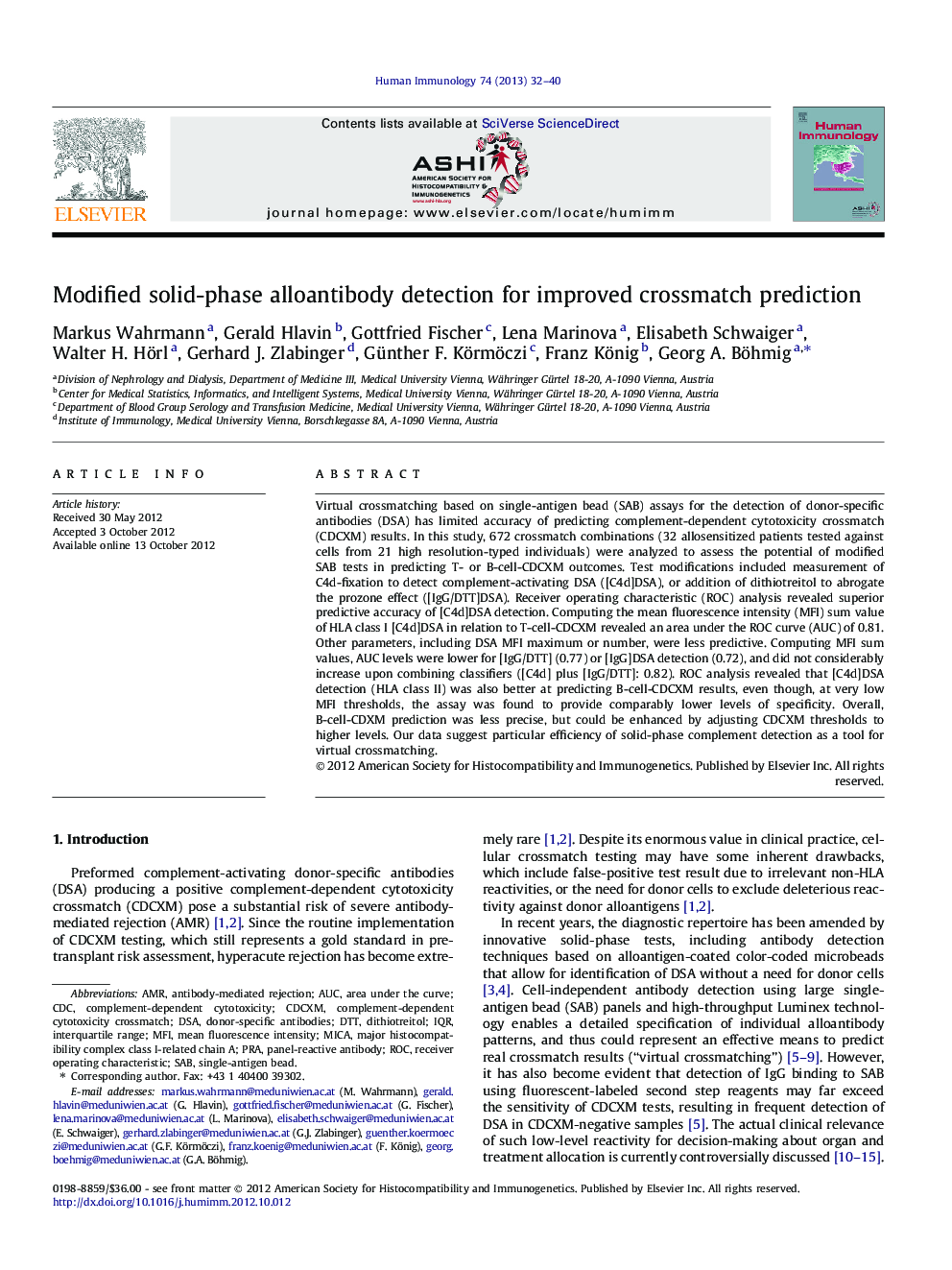| Article ID | Journal | Published Year | Pages | File Type |
|---|---|---|---|---|
| 3350797 | Human Immunology | 2013 | 9 Pages |
Virtual crossmatching based on single-antigen bead (SAB) assays for the detection of donor-specific antibodies (DSA) has limited accuracy of predicting complement-dependent cytotoxicity crossmatch (CDCXM) results. In this study, 672 crossmatch combinations (32 allosensitized patients tested against cells from 21 high resolution-typed individuals) were analyzed to assess the potential of modified SAB tests in predicting T- or B-cell-CDCXM outcomes. Test modifications included measurement of C4d-fixation to detect complement-activating DSA ([C4d]DSA), or addition of dithiotreitol to abrogate the prozone effect ([IgG/DTT]DSA). Receiver operating characteristic (ROC) analysis revealed superior predictive accuracy of [C4d]DSA detection. Computing the mean fluorescence intensity (MFI) sum value of HLA class I [C4d]DSA in relation to T-cell-CDCXM revealed an area under the ROC curve (AUC) of 0.81. Other parameters, including DSA MFI maximum or number, were less predictive. Computing MFI sum values, AUC levels were lower for [IgG/DTT] (0.77) or [IgG]DSA detection (0.72), and did not considerably increase upon combining classifiers ([C4d] plus [IgG/DTT]: 0.82). ROC analysis revealed that [C4d]DSA detection (HLA class II) was also better at predicting B-cell-CDCXM results, even though, at very low MFI thresholds, the assay was found to provide comparably lower levels of specificity. Overall, B-cell-CDXM prediction was less precise, but could be enhanced by adjusting CDCXM thresholds to higher levels. Our data suggest particular efficiency of solid-phase complement detection as a tool for virtual crossmatching.
